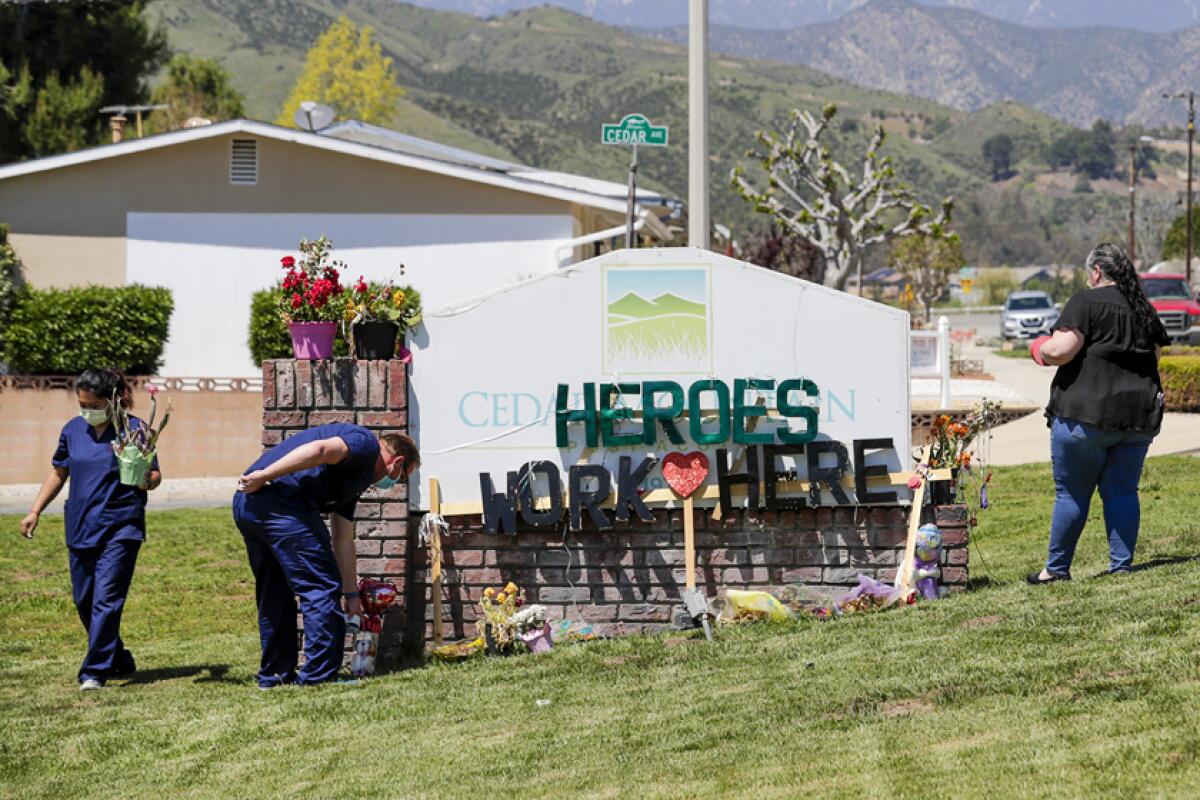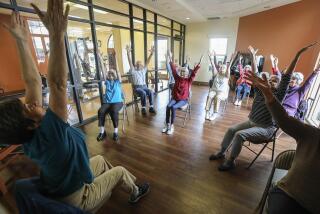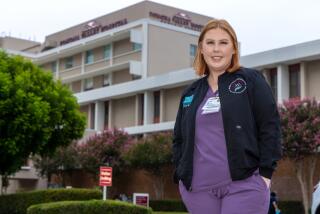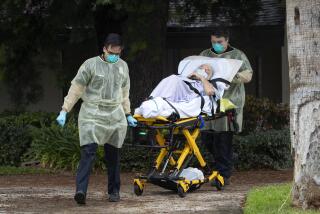As virus again surges in California, race is a defining factor in nursing facilities, research shows

- Share via
As COVID-19 once again surges across California, skilled nursing facilities with more Black and Latino residents are being hit harder than those with fewer residents of color, according to a new study.
Facilities with the highest number of Latino residents had coronavirus case rates 57% greater than those with few Latino residents.
In facilities where more than 2% of the residents were Black, case rates were as much as 40% higher than those without a significant number of Black patients, according to the research released Tuesday, which was commissioned by the nonprofit California Health Care Foundation and examined data from May and August.
The reasons for the disparities are unclear. One factor could be that more Black and Latino people live in lower-quality facilities, which are less equipped to deal with an infectious disease like COVID-19.
“We know from other research that nursing homes with high minority populations tend to have lower staffing and lower quality, and we know those are factors” for controlling diseases, said Charlene Harrington, a UCSF professor emeritus and co-author of the study.
Outside of nursing facilities, Latino residents have contracted COVID-19 at much higher rates than their share of the population. Nearly 60% of Californians who tested positive for the coronavirus have been Latino, while about 39% of the state’s population is Latino.
Black residents, on the other hand, are about 6% of the population and 4% of positive cases statewide.
The racial disparities in nursing home coronavirus rates are occurring independently of trends in the larger community.
And the disparities have grown larger as the pandemic has progressed, despite new mandates intended to protect nursing home residents, including increased testing, the researchers found.
The demographic data for the study were gathered by facility and not by individual residents, due to privacy rules. The study did not name any facilities.
“I think we have a lot of hypotheses and guessing but no real reasons,” said Bruce Spurlock, a co-author of the study and executive director of the nonprofit Cynosure Health, of the disparities.
The California Department of Public Health has used a predictive model to pinpoint high-risk facilities since May, conducting on-site visits along with other mitigation tactics including training and access to personal protective equipment, a spokesman said.
But the stark evidence of the pandemic’s inequitable toll comes as another wave of coronavirus hits elder care homes across California and the country.
Since the start of November, cases inside skilled nursing facilities have shot up, averaging nearly 230 new positives reported each day statewide — close to spring numbers when daily cases peaked.
“It is worse than it was six months ago, if for no other reason than we should know better,” said April Verrett, president of SEIU Local 2015, which represents nearly 400,000 healthcare workers statewide. “To find ourselves in the same place — I think it is unconscionable.”
In May, a quarter of the 800 skilled nursing facilities examined in the study had at least one resident who tested positive, and 16% had at least one death. By August, the percentage of facilities with positive cases ballooned to nearly two-thirds, and 37% had at least one resident die from COVID-19 or related causes.
The study also found that larger facilities and those operated for profit had more deadly outbreaks.
Facilities with older patients over age 85 also had worse outcomes, as did facilities with more than 49% male residents, according to the study.
But one of the key factors determining the safety of a facility is staffing levels, Harrington said.
Long a contentious issue in the elder care industry, the number of nurses, aides and other caregivers a facility is required to have is a proven predictor of its ability to control infections, Harrington said.
The study found that facilities with the highest nurse staffing had half the rate of coronavirus cases earlier in the pandemic and have continued to see that benefit.
But as more nursing home workers come down with COVID-19, dozens of providers across the state have been granted state waivers to lower staffing ratios — much to the chagrin of advocates who contend the decreases are detrimental to outcomes.
The federal government has provided billions in aid to the industry in part to provide more money for staffing, the advocates point out.
More than 25,000 California healthcare workers have tested positive for the virus, and 158 have died, according to state data. Some are dealing with sick family members or child-care issues.
“Staff is incredibly hard to find now because there are so many outbreaks,” Deborah Pacyna, public affairs director for industry group California Assn. of Health Facilities, said in a statement.
Harrington said that low wages are a driver of staffing problems, pointing out that the average aide in California makes about $15 an hour.
“If you are going to pay nursing assistants less than they can get as a janitor or in a fast-food place, why shouldn’t they work in a place that has less risk?” she said.
Verrett, the union leader, said that working conditions are also a factor, with workers reporting shortages of protective gear and some being asked to share or ration equipment. She believes that tougher statewide regulations are needed, rather than the patchwork of county remedies currently in place.
“All facilities are not created equal,” she said. “You have some operators who are doing the right thing, and you have some who don’t.”
The racial disparities and other risk factors uncovered by the study should prompt state officials to increase oversight at certain facilities and ensure that testing and other protective measures are in place, Spurlock said.
“This is really a clarion call to think about monitoring, oversight and quality improvement in nursing homes in a completely different way,” he said. “We have to be more proactive.”
More to Read
Sign up for Essential California
The most important California stories and recommendations in your inbox every morning.
You may occasionally receive promotional content from the Los Angeles Times.














